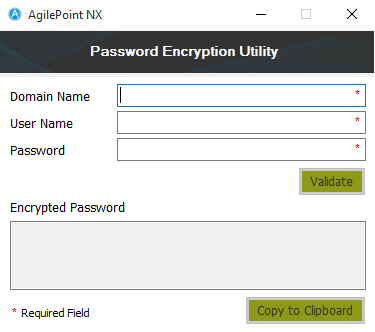

- #PASSWORD ENCRYPTION HOW TO#
- #PASSWORD ENCRYPTION PDF#
- #PASSWORD ENCRYPTION PASSWORD#
- #PASSWORD ENCRYPTION WINDOWS#
The difficulty is that if someone who is interested in such stuff acquires the password or discovers a means to open it without it, the content may be released, despite the owner's best attempts. This approach is used to safeguard individual documents, folders, and other data on a computer from other persons who may have access to the device. It implies that without the correct combination, no one can access the restricted material. Password Protection is similar to locking something away in a safe. Simply untick the "Encrypt contents to protect data" option and then click "OK." What is Password Protection? If the papers are accessed by removing the hard disc, the data will seem jumbled and meaningless.īy going to the "Attributes" section of the "Properties" window will allow you to reverse this operation at any time.

#PASSWORD ENCRYPTION WINDOWS#
The files will be protected with a password associated with your Windows user account after the process is completed. It is critical to saving the password in case you lose access to the password-protected files. If you have already used this approach, Windows will prompt you to save your encryption key. The encryption procedure will now begin, which may take a few seconds. Next, go to the "Attributes" area of the window and choose "Advanced."Īt the bottom, look for the option that reads "Encrypt contents to safeguard data." Select it, then click "OK" and "Apply." When you have located the file, right-click it and choose "Properties."When you have located the file, right-click it and choose "Properties." This approach may be used to password-protect files and folders. To create a password for any important document on your device, follow these steps −īegin by opening File Explorer and looking for the file you wish to secure.
#PASSWORD ENCRYPTION HOW TO#
How to Encrypt and Password Protect FilesĮvery Windows 10 device comes with a built-in password and encryption feature that is simple to set up and use. In this article, we'll go over the differences between the two techniques and how to safeguard your data from the individuals you're concealing it from while still ensuring that you don't lose access to it.
#PASSWORD ENCRYPTION PDF#
We frequently discuss ways to safeguard users' email, social media accounts, and other personal information, but what about text documents and other files that we could keep on our devices? If you have ever wondered how to keep a PDF or any other file private, you have probably come across two terms: "password protection" and "password encryption." Even though they may sound similar, password protection and encryption are entirely different from each other. This security feature can be useful in the event of a breach because hackers won't be able to access your personal papers. Some of the most fundamental Windows capabilities, such as the ability to specify passwords for specific files and folders, are often overlooked nowadays. HP Switch(config)# tacacs-server host 10.0.0.Protecting documents with a password will keep your data secure, whether you're sharing a device with other users or exchanging files over the internet. HP Switch(config)# tacacs-server host 10.0.0.1 key secret1 HP Switch(config)# tacacs-server encrypted-key U2FsdGVkX18XWadTeFN+bxHxKA/q+s5cV1NiYvx+TuA= HP Switch(config)# tacacs-server key secret1 HP Switch(config)# radius-server host 10.0.0.1 encrypted-key U2FsdGVkX18XWadTeFN+bxHxKA q+s5cV1NiYvx+TuA= HP Switch(config)# radius-server host 10.0.0.1 key secret1 HP Switch(config)# radius-server encrypted-key U2FsdGVkX18XWadTeFN+bxHxKA/q+s5cV1NiYvx+TuA= HP Switch(config)# radius-server key secret1 This key is only accessible using the CLI, and is not visible in any file transfers. The pre-shared key on the destination device must be identical to the pre-shared key on the source device or the affected security credentials are not be usable. This allows transfer of configurations with all relevant credentials and provides much more security than plaintext passwords in the configuration.Īdditionally, you can set a separate, 256-bit pre-shared key, however, you must now set the pre-shared key on the destination device before transferring the configuration.

By default, a fixed, hard-coded 256-bit key that is common to all HP networking devices is used. When the encrypt-credentials feature is enabled, the affected credentials are encrypted using aes-256-cbc encryption. The encrypt-credentials command allows the storing, displaying, and transferring of credentials in encrypted form. Encrypting credentials in the configuration fileĪ security risk is present when credentials used for authentication to remote devices such as RADIUS or TACACS+ servers are displayed in the configuration file in plain text.


 0 kommentar(er)
0 kommentar(er)
